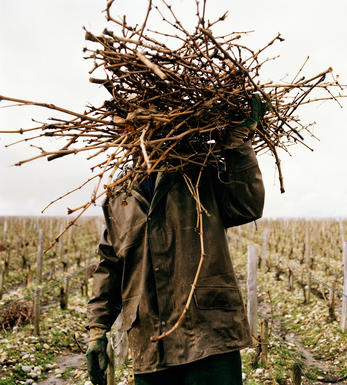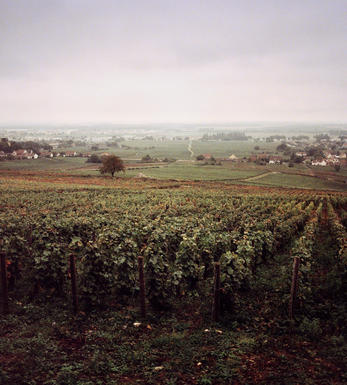
About this WINE

Domaine des Gerbeaux
The wine Domaine des Gerbeaux is owned and run by wife/husband team of Beatrice (who heralds from nearby Chaintre) and Jean-Michel Drouin, who since 1979 has developed the domaine originated by his grandfather in 1896. They have now been joined by their son Xavier.
Jean-Michel produces some of the best and most distinctive wines in the Mâconnais region. In typically Burgundian style, he has small parcels of vines (over 40) spread around in Mâcon, St. Véran and Pouilly-Fuissé.
The wines are fermented in stainless steel tanks, enamel vats (to maxmise the contact with the lees) or wooden barrels depending on their nature. The wines are superb and Jean-Michel is in the envious position of knowing that every bottle is sold before it is bottled. In particular, his Pouilly-Fuissé Vieilles Vignes is outstanding, with richness, finesse and perfect integration between fruit and oak. The St Véran wine comes from the village of Davayé, from a vineyard immediately adjacent to Pouilly Fuissé. Berry Bros & Rudd take the entire crop of this cuvee every year.

Mâcon
The city of Mâcon represents the capital of the Mâconnais district in the region of Burgundy, to which it lends its name. There are various appellations under the name Mâcon: the generic Mâcon AC, Mâcon Supérieur and the Mâcon-Villages, in ascending order of how much land each appellation entails.
The standard Mâcon AC controls around 53 hectares of vineyard, 70 percent of which is used to produce just white wine, primarily from the Chardonnay grape. Mâcon used to be recognised for its red wines, but in the last century Mâconnais whites have come to the forefront far more. This generic appellation represents a specific style of wine made across the Mâconnais district, rather than an appellation which would cover a select area or terroir.
The ‘Supérieur’ in Mâcon Supérieur refers not to an increase in quality but rather to the boost in alcohol content, a term which can be applied to either red or white wines.
Mâcon-Villages is a specific appellation which refers to white wines produced in certain areas of the Mâconnais region, and usually denotes an improvement in quality over the straightforward Mâcon AC wines.
Many of the small communes under the Mâcon classification opt to add their name to that of the appellation on their wines; notable examples include La Roche Vineuse, Uchizy and Lugny.
Wines from Mâcon tend to be uncomplicated affairs, simple but enjoyable, and the whites in particular are notable for their dry, light bodies and the presence of floral and nutty facets.

Chardonnay
Chardonnay is often seen as the king of white wine grapes and one of the most widely planted in the world It is suited to a wide variety of soils, though it excels in soils with a high limestone content as found in Champagne, Chablis, and the Côte D`Or.
Burgundy is Chardonnay's spiritual home and the best White Burgundies are dry, rich, honeyed wines with marvellous poise, elegance and balance. They are unquestionably the finest dry white wines in the world. Chardonnay plays a crucial role in the Champagne blend, providing structure and finesse, and is the sole grape in Blanc de Blancs.
It is quantitatively important in California and Australia, is widely planted in Chile and South Africa, and is the second most widely planted grape in New Zealand. In warm climates Chardonnay has a tendency to develop very high sugar levels during the final stages of ripening and this can occur at the expense of acidity. Late picking is a common problem and can result in blowsy and flabby wines that lack structure and definition.
Recently in the New World, we have seen a move towards more elegant, better- balanced and less oak-driven Chardonnays, and this is to be welcomed.



Buying options
Add to wishlist
Description
Lots of pretty, ripe white fruit on the nose. 70% of this cuvée undergoes malo, resulting in the perfect equilibrium of crunch and plushness. So versatile, Jean-Michel’s Macon-Solutré is a prime candidate to be your house white.
Will Heslop, Wine Buyer
wine at a glance
Delivery and quality guarantee